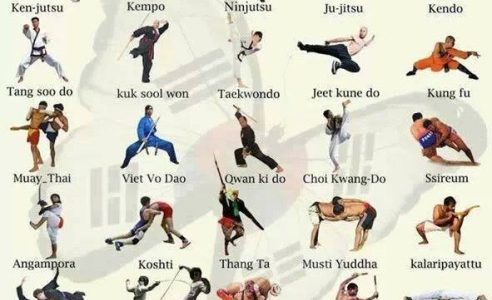Discovering The Distinctions Between Traditional Martial Arts And Contemporary Battle Sports
Discovering The Distinctions Between Traditional Martial Arts And Contemporary Battle Sports
Blog Article
Personnel Author-McGinnis Finnegan
When you think about martial arts, do you lean much more towards the typical practices or the contemporary battle sporting activities? Each course offers special advantages and experiences, formed by their approaches and training approaches. Traditional martial arts emphasize individual growth and technique, while modern combat sports concentrate on competition and performance. Comprehending these distinctions can direct you in selecting the appropriate method for your trip. But how do these distinctions materialize in training and approach?
The Ideology and History Behind Typical Martial arts
While many individuals associate martial arts with physical battle, the ideology and background behind conventional martial arts run much deeper. You'll find that these disciplines emphasize personal development, self-control, and regard.
Stemming from old methods, conventional martial arts were frequently developed for Self-Defense and spiritual advancement. They personify principles such as balance, consistency, and self-discipline, assisting practitioners past mere combating skills.
As mouse click the following internet site educate, you'll not just find out methods but also gain insights into the society and worths that formed these arts. The rituals and traditions, typically passed down through generations, cultivate a feeling of area and belonging.
The Affordable Nature of Modern Battle Sports
Modern combat sports have actually transformed the landscape of martial arts into a highly affordable arena, where professional athletes take on in a test of skill, method, and endurance.
You'll notice that competitors are often organized with stringent rules and regulations, ensuring fair game and security. These events attract huge target markets, sustaining the exhilaration and intensity of competitions.
Athletes train rigorously, not just for physical expertise but additionally for psychological strength, knowing that every information counts in the ring. The adrenaline rush throughout competitions is palpable, as boxers push their restrictions to assert triumph.
Fans appreciate the athleticism and creativity involved, making modern fight sporting activities a thrilling spectacle that remains to evolve and astound fanatics all over the world.
Training Methods and Techniques: A Comparative Analysis
The affordable ambience of contemporary combat sporting activities needs innovative training approaches that differ substantially from typical martial arts.
In contemporary training, you'll focus on details techniques, competing, and conditioning, usually making use of drills that mimic actual battle scenarios. You'll see an emphasis on measurable performance and frequent competition to analyze your skills.
On the other hand, traditional martial arts focus on types, katas, and thoughtful trainings, frequently highlighting technique and respect over competitors.
Training is usually much less extreme and might involve repetitive technique as opposed to real-time sparring.
While both methods build ability and health and fitness, contemporary battle sporting activities offer a more vibrant and adaptable training setting, preparing you for immediate difficulties in the ring or cage.
Pick the path that straightens with your goals and interests.
Final thought
In picking in between typical martial arts and contemporary combat sporting activities, it really boils down to what you value most. If https://dominickgqfox.worldblogged.com/40462771/prioritizing-discipline-and-durability-youngsters-martial-arts-programs-open-their-unexposed-potential-what-life-changing-skills-will-your-kid-uncover seeking individual growth, discipline, and a feeling of neighborhood, traditional arts could be your best fit. Yet if you prosper on competition and real-time challenges, modern battle sporting activities could be the method to go. Inevitably, both paths provide special benefits, so it's everything about aligning your training with your personal objectives and interests.
